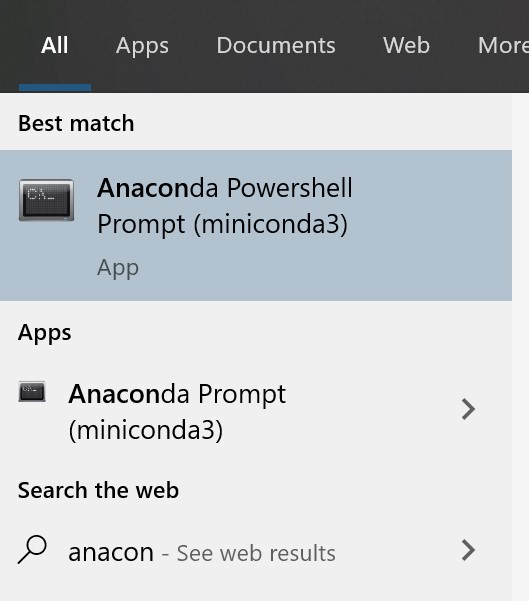Automatically activate conda evironment in Powershell for VSCode
VSCode automatically links conda environments in the integrated terminal through the python extension.
This is done through the following command which automatically triggers for any new environment
conda activate myenv
The integrated terminal also calls this command every time a new terminal is created
>C:/Users/<username>/AppData/Local/Continuum/miniconda3/Scripts/activate
This shell to conda integration is done by the vscode python integration. Github source
The problem
But there is one problem. I don’t like windows cmd. Most of the heavy scripting is done using powershell. The python extension officially does not support powershell for activating conda environments
“Note: conda environments cannot be automatically activated in the integrated terminal if PowerShell is set as the integrated shell. See Integrated terminal - Configuration for how to change the shell.” - Using python environments in VSCode
The reason can be found from their source code (probably) which is written in typescript. But considering my zero experience in type script I won’t go much detail into that. For now we will see the workaround to activate conda environments automatically using powershell instead of cmd.
Conda will not be recognized if powershell is the integrated terminal. That’s why I have been using cmd since a long time.

The solution
Out of the two commands mentioned at the very beginning,
C:/Users/<username>/AppData/Local/Continuum/miniconda3/Scripts/activate
this command activates conda and adds it to system path. For powershell, the command can be found in the powershell shortcut for anaconda which can be searched from windows start menu.

Properties of the shortcut contain the initial commands to set up anaconda in powershell.
Mine says this
%windir%\System32\WindowsPowerShell\v1.0\powershell.exe -ExecutionPolicy ByPass -NoExit -Command "& 'C:\Users\<username>\AppData\Local\Continuum\miniconda3\shell\condabin\conda-hook.ps1' ; conda activate 'C:\Users\<username>\AppData\Local\Continuum\miniconda3' "
Now, in vscode , change default shell to powershell
ctrl+shift+P -> Terminal: Select Default Shell -> powershell
Open settings
ctrl+shift+P -> Preferences: Open Settings(JSON)
Add this line at the bottom before }
"terminal.integrated.shellArgs.windows": [
"-ExecutionPolicy",
"ByPass",
"-NoExit",
"-Command",
"& C:\\Users\\<username>\\AppData\\Local\\Continuum\\miniconda3\\shell\\condabin\\conda-hook.ps1",
";conda activate 'C:\\Users\\<username>\\AppData\\Local\\Continuum\\miniconda3'"
]
Update:
VScode has deprecated shellArgs. Hence Use this instead.
"terminal.integrated.defaultProfile.windows": "PowerShell",
"terminal.integrated.profiles.windows": {
"PowerShell":{
"source": "PowerShell",
"args": [
"-ExecutionPolicy",
"ByPass",
"-NoExit",
"-Command",
"& C:\\Users\\<Username>\\Miniconda3\\shell\\condabin\\conda-hook.ps1"
]
}
},
Make modifications based on your anaconda path and activation command in the powershell shortcut.

The command conda activate myenv will be automatically called by the python extension.
Debug console
The terminal arguments are not called in debug console though. Hence python might be called without initializing the conda environment which will result in multiple library erros. More on this
The solution is to let it fail for first time. Then activate conda in the debug console. Another solution will be to revert back to cmd and run debugger.
C:\\Users\\<username>\\AppData\\Local\\Continuum\\miniconda3\\shell\\condabin\\conda-hook.ps1 && conda activate 'C:\\Users\\<username>\\AppData\\Local\\Continuum\\miniconda3'
References:
https://stackoverflow.com/a/61402982/1513792